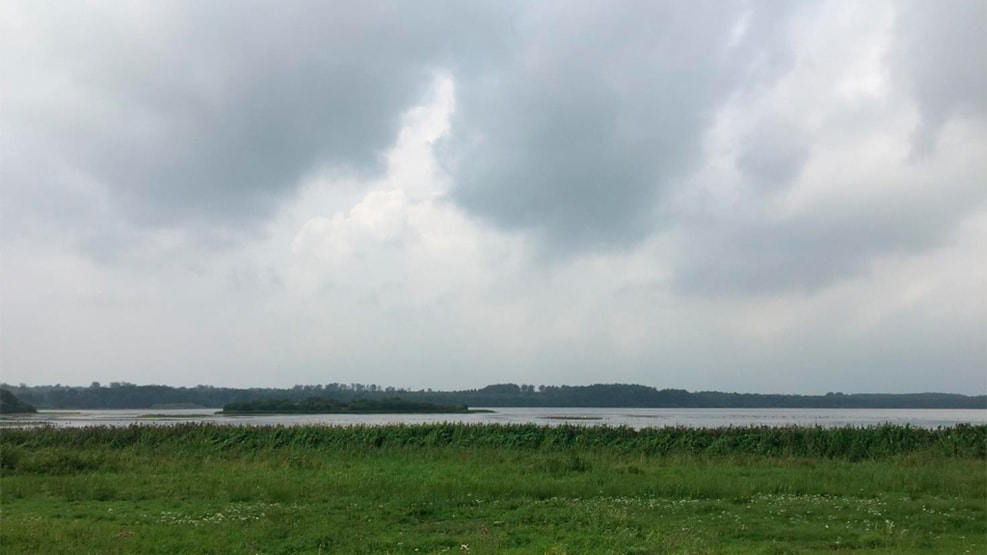
Brændegård Lake og Nørre Lake
Brændegård Sø (Brændegård Lake) and Nørre Sø (Nørre Lake) are, along with the surrounding nature, part of the vast dead-ice landscape occupying major parts of central Funen
Introduction
The area is dominated by the Brahetrolleborg estate with its vast deciduous and coniferous forests and especially the two large lakes, Brændegård Sø and Nørre Sø. The area also contains many small streams and lakes as well as some calcareous grassland and rich fens.
Brændegård Sø is located south-southeast of Brahetrolleborg estate and is situated between the two forests Storskov and Fiskerup. Nørre Sø is close to Brændegård Sø and is surrounded by Fiskerup forest. Northwest of Brandegård Sø is one of only two active bogs on Funen, called Nybo bog. The bog includes, among other things, bog-rosemary (Andromeda polifolia), cranberry (Vaccinium oxycoccus), hare’s-tail cottongrass (Eriophorum vaginatum) and white beak-sedge (Rhynchospora alba). The bog is also an important location for insects and butterflies.
Both lakes belong to the estate of Brahetrolleborg and are beautifully situated in the landscape with its varied nature, forests and farmland.
Habitat description
Brændegård Sø is Funen’s second largest lake, surpassed only by Arreskov Sø. The lake has an area of 108 hectares, with a smaller island in the middle the lake has a mean depth of 0.8 meters, and at low tide several small reefs are exposed. Nørre Sø has an area of 0.7 km2, and in the middle of the lake lies the small island called Lucieø and a smaller unnamed islet. The lake is deeper than Brændegård Sø but is still relatively shallow with a maximum depth of 5.8 meters. The lakes host a large cormorant (Phalacrocorax carbo) colony with almost 2000 breeding pairs, which is the largest in northern Europe.
Value
Brændegård Sø and Nørre Sø are unique to the area, mainly because of the two large cormorant colonies, but also because of the White-tailed Eagle (Haliaeetus albicilla) that has been registered at the lakes. The Whitetailed Eagle breeds and forages at both lakes, and the number of couples can vary, but several have been observed at the same time, mainly in the autumn and spring. The predator prefers to hunt around the cormorant colonies.
Protection and legislation
The two lakes are protected by Nature protection legislation §3 and a local preservation act of 1986 created by the Danish legislation that protects the 5,32 km2 area in which the lakes lie. The lakes, and the forest-area around it, measuring at 25,75 km2, are also protected by Natura 2000, area no. 120, habitat area H104 and Bird Directive F74. The aim of the Natura 2000 protection is to preserve the important habitats in the area, including deciduous forests, bogs, calcareous grassland, rich fens, ash and alder swamp as well as the two lakes. Natura 2000 also protects a number of bird species in the area, which are breeding populations of cormorants (Phalacrocorax carbo, the Honey Buzzard (Pernis apivorus), White-tailed Eagle (Haliaeetus albicilla) and Common Tern (Sterna hirundo), as well as resting/foraging Shoveler (Anas clypeata).
Public access
It is possible to walk along a path all the way around Nørre Sø.
(It is not possible to park in the area. There are currently no parking spaces and there is a traffic security problem that needs to be fixed before a parking option can be considered safe.)